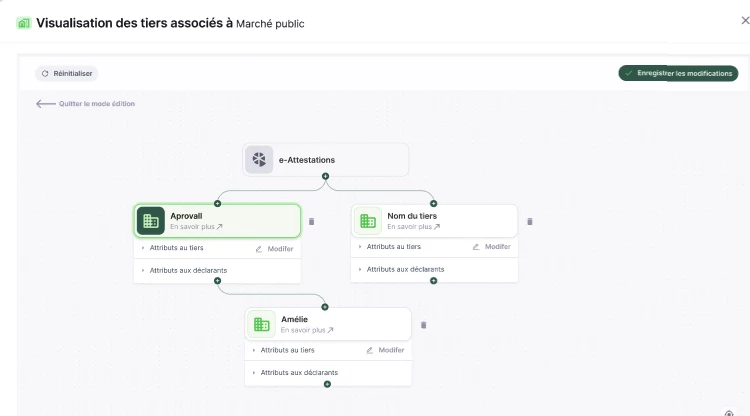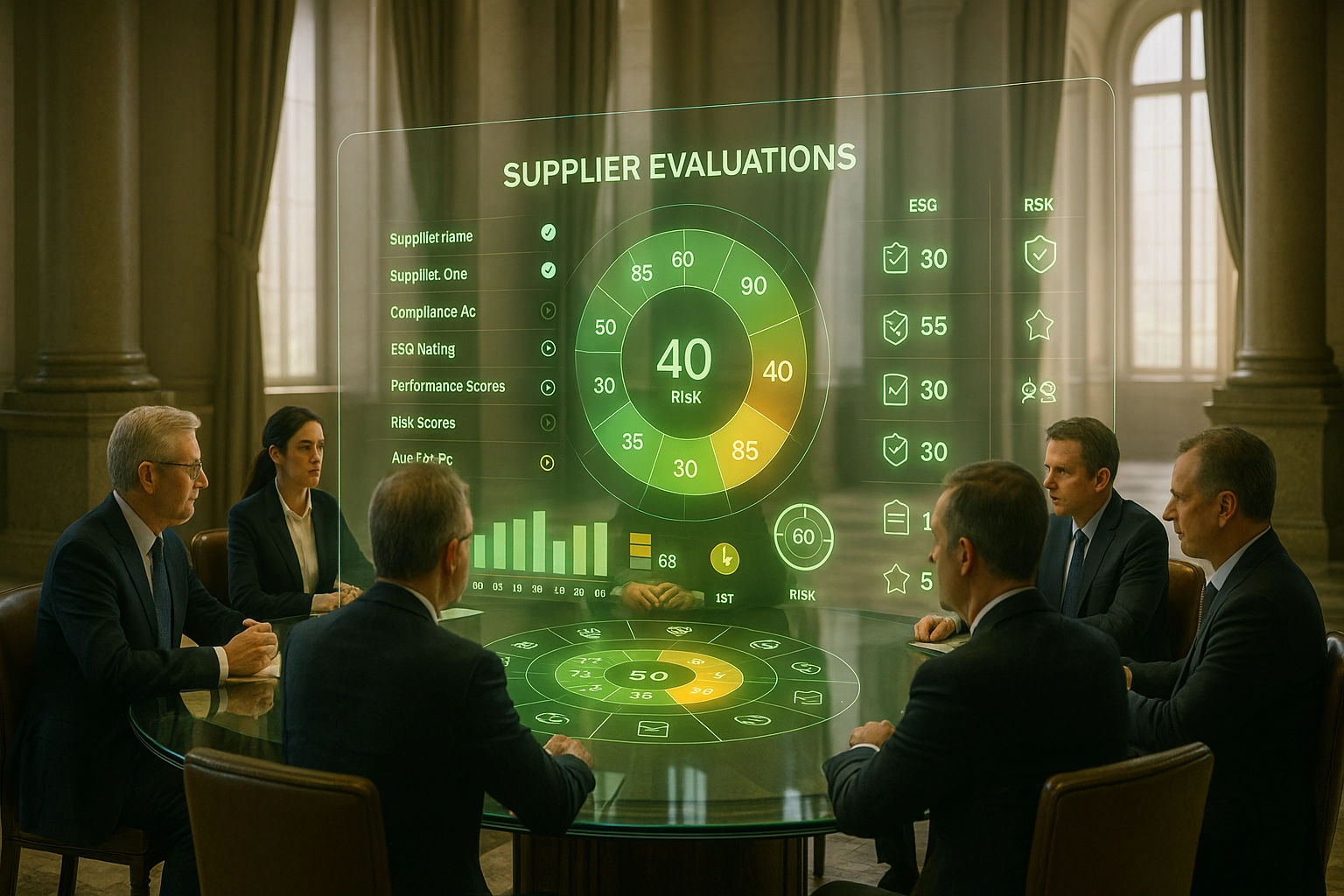How to Identify Risks Across Your Entire Supply Chain

As supply chains grow more complex and geographically dispersed, companies can no longer afford to assess only their direct suppliers. Major risks—whether related to cybersecurity, corruption, or production continuity—can emerge much deeper in the chain. A single raw material supplier at tier 8 can jeopardize an entire production line. This is why expanding risk assessments to cover the full supply chain is increasingly critical.
Anticipating Risks Through TPRM
Third Party Risk Management (TPRM) solutions now make it possible to visualize and manage your entire third-party ecosystem, including your suppliers’ subcontractors. By integrating new technologies—such as artificial intelligence and media analysis—these tools help detect early warning signals that could impact operations.
One major advantage of these solutions is their ability to categorize third parties by role (direct suppliers, subcontractors, etc.) as well as by contract, product, or sector. This structured view is essential for clear visibility over your third-party environment.
How to Map Your Supply Chain
Supply chain mapping begins with a transparency and collaboration exercise with your direct suppliers: ask them to share the identities of their own key partners. This step can be supported by structured questionnaires, enriched with unique identifiers like the DUNS Number, to facilitate data matching and create a dynamic graphical representation of your chain.
The Aprovall360 solution takes it further: it helps establish links between actors in the chain to structure information and build tailored scenarios. These “Context” models are customizable and allow you to add specific attributes to each situation, accurately modeling interactions between third parties.
Supply Chain Discovery: A New Collaborative Approach
A rising trend is Supply Chain Discovery, which involves delegating part of the supply chain identification task to your suppliers themselves. By equipping them with simple, secure tools to map their own networks, you gradually gain a broad, structured view of your entire supply chain.

Valuable Visibility for Greater Resilience
Having a complete, documented, and structured view of your supplier ecosystem—both direct and indirect—makes you more responsive and confident. You can anticipate disruptions, respond to cyberattacks, or act swiftly on compliance incidents far more effectively than with a tier-1-only approach.
At the same time, supply chain traceability is strengthened. You can more easily track interactions between actors—even beyond tier 1—with better visibility over tier-2 suppliers and critical subcontractors. Managing subcontracting contexts becomes more intuitive, especially with solutions like Aprovall360, which naturally integrate context creation and tracking into your workflows.
Learn how TAG HEUER identifies its third parties across its entire supply chain
These articles might interest you
-
 18 August 2025Reindustrialization: Why Mastering Third Parties Is Now a Strategic ImperativeSecteurFrance’s reindustrialization is underway. Driven by the ambitions of the France 2030 plan, the ecological transition, and economic sovereignty challenges, it’s about much more than simply bringing factories back onto national soil. It requires a deep rethink of sourcing, evaluation, and supplier management processes. Restoring independence and economic sovereignty has become a major strategic issue […]
18 August 2025Reindustrialization: Why Mastering Third Parties Is Now a Strategic ImperativeSecteurFrance’s reindustrialization is underway. Driven by the ambitions of the France 2030 plan, the ecological transition, and economic sovereignty challenges, it’s about much more than simply bringing factories back onto national soil. It requires a deep rethink of sourcing, evaluation, and supplier management processes. Restoring independence and economic sovereignty has become a major strategic issue […]Read more
-
 15 April 2025Supplier Evaluation in the Public Sector: A Strategic Governance ChallengeSecteurThe public sector accounts for a significant portion of economic activity in France and involves a large number of contract holders. As such, public sector actors face critical challenges in managing supplier relationships—especially since third-party qualification has become a cornerstone of public procurement strategies. Beyond basic oversight, it now forms part of a broader approach […]
15 April 2025Supplier Evaluation in the Public Sector: A Strategic Governance ChallengeSecteurThe public sector accounts for a significant portion of economic activity in France and involves a large number of contract holders. As such, public sector actors face critical challenges in managing supplier relationships—especially since third-party qualification has become a cornerstone of public procurement strategies. Beyond basic oversight, it now forms part of a broader approach […]Read more
-
 18 May 2025Multi-Entity TPRM Deployment for Large Groups: Strategy and ChallengesSecteurIn a context where large groups are orchestrating increasingly vast ecosystems of third parties, multi-entity deployment of TPRM has become a major strategic imperative. Société Générale exemplifies this reality with 119,000 employees across 62 countries, highlighting the operational complexity of modern multi-site structures. This exponential complexity calls for third-party governance adapted to the challenges of […]
18 May 2025Multi-Entity TPRM Deployment for Large Groups: Strategy and ChallengesSecteurIn a context where large groups are orchestrating increasingly vast ecosystems of third parties, multi-entity deployment of TPRM has become a major strategic imperative. Société Générale exemplifies this reality with 119,000 employees across 62 countries, highlighting the operational complexity of modern multi-site structures. This exponential complexity calls for third-party governance adapted to the challenges of […]Read more
-
 20 May 2025Deploying a TPRM Platform in Private Companies: Proven Methodology for Effective Third-Party GovernanceSecteurIn a context where TPRM programs require executive-level support to succeed, deploying a TPRM platform is a major strategic challenge. While deployment in the public sector has its own regulatory specificities, multi-site private companies face distinct organizational challenges that call for a tailored methodological approach. This structured methodology transforms third-party evaluation into a true third-party governance lever, going beyond mere documentation compliance to […]
20 May 2025Deploying a TPRM Platform in Private Companies: Proven Methodology for Effective Third-Party GovernanceSecteurIn a context where TPRM programs require executive-level support to succeed, deploying a TPRM platform is a major strategic challenge. While deployment in the public sector has its own regulatory specificities, multi-site private companies face distinct organizational challenges that call for a tailored methodological approach. This structured methodology transforms third-party evaluation into a true third-party governance lever, going beyond mere documentation compliance to […]Read more

